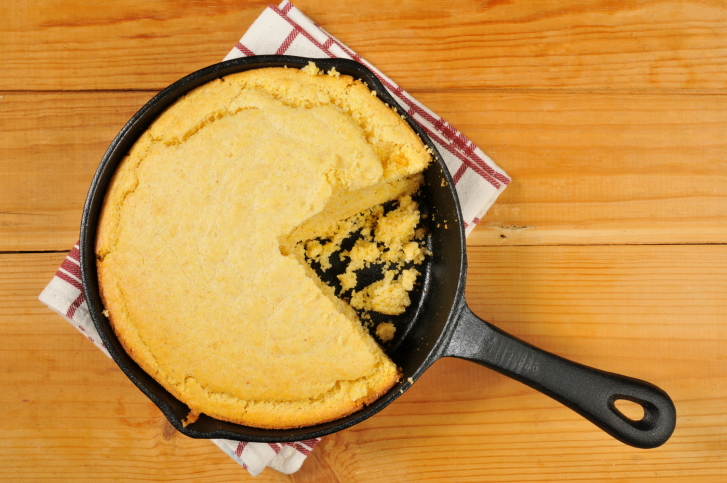 Cast iron skillets have been around since you were a child. You may remember them from your grandmother's house or seen it passed down from generation to generation. Well, as it turns out, this old-school skillet is actually a great tool for health.
Cast iron skillets have been around since you were a child. You may remember them from your grandmother's house or seen it passed down from generation to generation. Well, as it turns out, this old-school skillet is actually a great tool for health.
The Environmental Working Group (EWG) released a study on non-stick cookware (Teflon). Results showed that the cookware reached temperatures that produced toxic particles and fumes potentially dangerous to human health long before manufacturer DuPont had previously admitted.
According to the study results, in two to five minutes on a conventional stovetop, Teflon cookware was found to exceed temperatures at which coating breaks apart and emits toxic particles and gases linked to pet bird deaths and potential human illnesses.
You May Like: One Pan Cooking: A Dish To Cook Yourself Back To Health
The journal Environmental Health Perspectives published an article discussing the potential health effects of both perfluorooctanyl sulfonate (PFOS) or “Scotchguard,” and perfluoroctanoic acid (PFOA) or “Teflon.” They noted the following about PFOA:
- It hangs around in the body, eliminated after 3.8 years.
- Animal studies have shown that high doses can cause cancer, physical development delays, endocrine disruption, and neonatal mortality.
- In older animals, the compound can cause liver and pancreatic tumors.
With that said, here's 5 healthy reasons why you should use a cast-iron skillet:
1. It Strengthens Your Food With Iron
While it’s well accepted that cast iron increases iron content of food, few sources actually quantify the change, which always made me question if that was an old wives’ tale. In a little known study from 1965, researchers measured the iron content of 7 foods cooked in cast iron or glass. Acidic foods and those cooked for longer periods of time accumulated the most iron. Tomato sauce, for example, had 87.5 mg of iron when cooked in a cast-iron pan, but a mere 3.0 mg when cooked in a glass pan (per 100g serving, which is less than ½ cup). Even non-acidic and quick cooking foods, like eggs and fried potatoes, averaged a five-fold increase in iron content when cooked in an iron skillet.
This is especially good news for African American women who may be iron deficient. Also it's good for menstruating females or pregnant moms who have increased iron needs or, for whatever reason, don’t eat enough iron-rich foods.
2. It evenly distributes heat:
Cast iron creates an even, intense heat that makes it really flexible and effective for all sorts of cooking. That means it helps seal in juices and keeps food moist and delicious.
3. It lasts for a long time:
Cast iron lasts a really long time, often passed down from one generation to the next. Old and worn pieces can be refurbished with...
...very little scrubbing, making this a great eco-friendly option.
4. It's naturally non-stick:
Once it’s seasoned, cast iron, used correctly, won’t cause foods to stick, and it does not emit the toxic fumes that non-stick pans do.
5. You can use less oil:
A well-seasoned pan is virtually non-stick, which means you can use less oil in your recipes, cutting down on the fat where desired.To season your cast-iron skillet, cover the bottom of the pan with a thick layer of kosher salt and a half inch of cooking oil, then heat until the oil starts to smoke. Carefully pour the salt and oil into a bowl, then use a ball of paper towels to rub the inside of the pan until it is smooth. To clean cast iron, never use soap. Simply scrub your skillet with a stiff brush and hot water and dry it completely.
Extra. It's emergency-ready:
You can use cast iron over any heating source, so even in a natural disaster, you’ve got a way to cook your food even over a fire.









